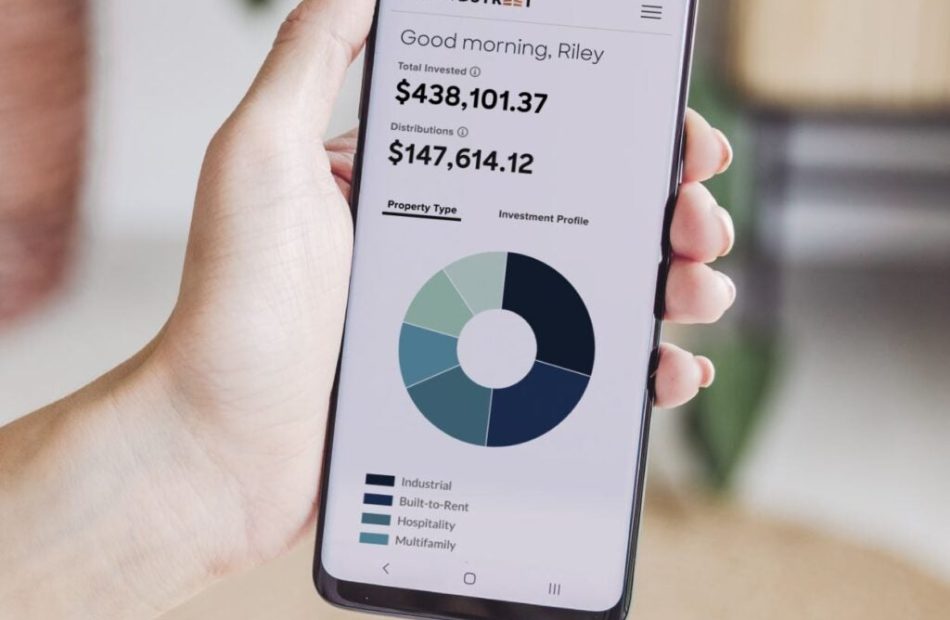Chinese Fund Giants Slash ETF Fees Amid Intense Market Competition
Major Chinese fund companies have announced a reduction in fees for a selection of equity exchange-traded funds (ETFs). This move intensifies the price war in the booming $400 billion ETF market.
What Happened: The fee cuts come a day after Wu Qing, China’s chief securities regulator, expressed support for index investment and fee reform in the fund industry. ETFs, which typically track an index and trade on exchanges, have seen significant growth this year as investors turn away from underperforming active fund managers, Reuters reported on Wednesday.
China Asset Management Co (ChinaAMC), leading the ETF market, announced it would reduce fees on eight ETF products, including the 160 billion yuan China SSE 50 ETF. The management fee will drop to 0.15% from 0.5%, and the custodian fee to 0.05% from 0.1%.
See Also: Steve Madden Announces Plans To Move Production To Avoid Trump Tariffs, But There’s A Catch
Other fund companies such as E Fund Management, Huatai-PineBridge Fund Management, Harvest Fund Management, and HuaAn Fund Management have made similar announcements. This trend is expected to attract more capital into the market, with net inflows into China’s onshore ETFs surpassing 900 billion yuan this year, according to BNP Paribas.
Why It Matters: The fee reduction by major Chinese fund companies comes amid a backdrop of economic measures and market fluctuations. In October, investor sentiment was dampened when anticipated large-scale economic stimulus measures from Chinese authorities did not materialize. Despite signals of increased fiscal support, the absence of a substantial economic package left traders underwhelmed.
Furthermore, China’s decision to cut interest rates in late October led to a decline in several China-focused ETFs in the U.S. This move, aimed at stimulating economic growth, instead raised concerns among investors about its broader implications.
Meanwhile, U.S.-listed Chinese ETFs have been providing American investors exposure to Chinese equities, bonds, or a combination of both, while being traded on U.S. stock exchanges. These ETFs are a convenient way for investors to gain diversified exposure to China’s economic growth without the complexities of directly investing in foreign markets. According to Benzinga Pro, KraneShares CSI China Internet ETF KWEB, iShares China Large-Cap ETF FXI, Invesco Golden Dragon China ETF PGJ, and iShares MSCI China ETF MCHI are some of the popular names on the list.
Read Next:
Disclaimer: This content was partially produced with the help of Benzinga Neuro and was reviewed and published by Benzinga editors.
Image via Shutterstock
Market News and Data brought to you by Benzinga APIs
© 2024 Benzinga.com. Benzinga does not provide investment advice. All rights reserved.
CrowdStreet's New CEO John Imbriglia Charts a Bold Path for Commercial Real Estate Investors
In a candid interview with Benzinga, CrowdStreet‘s newly appointed CEO, John Imbriglia, shared his vision for redefining the private market investment landscape. With over two decades of experience in alternative investments and technology, Imbriglia leads the company through a transformative phase focused on transparency, security and empowering investors with cutting-edge tools and resources. His leadership represents a turning point as CrowdStreet seeks to scale its operations and solidify its reputation as a trusted platform for independent investors.
Don’t Miss:
Since its founding, CrowdStreet has been a trailblazer in democratizing access to commercial real estate (CRE) investments. The platform has listed over 790 deals from 344 sponsors to date, raising more than $4.4 billion in investment capital. Boasting a realized IRR of 12.2% and an average hold period of 3.4 years, CrowdStreet has consistently delivered results while equipping investors with the tools they need to make confident decisions.
Imbriglia’s vision builds on this legacy, aiming to position CrowdStreet as a “Category of One” in private market investing. He described this approach as providing a trusted, all-in-one platform for education, insights and access to diverse private market opportunities. “This is about empowering our members to achieve their financial goals while maintaining the highest standards of trust, security and innovation,” he emphasized.
“We’re not just building a marketplace; we’re creating an ecosystem where investors can seamlessly explore, evaluate and invest in private market opportunities with confidence,” Imbriglia explained. The Offering Detail Page (ODP) is central to this vision, redesigned to enhance user experience.
The ODP now organizes critical information into clear tabs – Summary, Key Risks, Offering Details and Documents – enabling investors to quickly access vital data such as the sponsor’s pro forma, market insights and CrowdStreet’s due diligence reports. This initiative reflects the company’s commitment to transparency and investor empowerment.
Imbriglia also highlighted CrowdStreet’s expansion into new asset classes for 2025, including private lending, private equity and venture capital. These efforts, led by industry veteran Sheldon Chang, aim to unlock opportunities that were once exclusive to institutions and ultra-high-net-worth individuals. By broadening its offerings, CrowdStreet allows members to diversify their portfolios and pursue financial growth in the private markets.
In response to past challenges, such as the Nightingale incident, CrowdStreet has implemented industry-leading security and oversight measures. Transitioning to a FINRA-regulated broker-dealer model and funding deals through third-party escrow accounts are just a few examples of how CrowdStreet safeguards investor funds. These efforts, combined with tools like Project Status Reports, Quarterly Market Snapshots and an enhanced Offering Detail Page (ODP), reinforce the platform’s dedication to transparency and trust.
With a strengthened leadership team, expanded offerings and a clear focus on transparency, CrowdStreet is poised to lead the private market industry into its next chapter – delivering value, confidence and empowerment to a growing community of independent investors.
Read Next: Want To Grow Your Wealth Passively? These High-Yield Real Estate Notes Might Be Your Holy Grail
Don’t miss out on this opportunity to take advantage of high-yield investments while rates are high. Check out Benzinga’s favorite high-yield offerings.
Market News and Data brought to you by Benzinga APIs
© 2024 Benzinga.com. Benzinga does not provide investment advice. All rights reserved.
If You Bought Bitcoin At $387 A Decade Ago, You Would Now Have More Than 2X The Average US Retirement Savings
Bitcoin BTC/USD has been on a record-breaking run since Donald Trump was elected president earlier this month.
The leading cryptocurrency has been hitting new all-time highs practically every day, with the latest upswing pushing it beyond $94,000 for the first time.
Interestingly, the bullish run has made one Bitcoin worth more than the average retirement savings of Americans.
What happened: According to the Federal Reserve’s most recent Survey of Consumer Finances, the median retirement savings in the U.S. was estimated to be $86,900. This reflected an increase of 15% from 2019.
A separate study by Transamerica Center in 2023 revealed that millennials, those born between 1981 and 1996, saved only $49,000 in retirement funds, while Generation X, born between 1965 and 1980, saved $82,000.
In contrast, the value of Bitcoin has leapfrogged 23,853% in the last decade, rising from $387 in Nov. 2014 to $92,696 as of this writing.
So, if someone bought $1,000 in Bitcoin ten years ago, their investment would now be worth $239,524, more than twice the estimated retirement savings highlighted above.
Additionally, a report disclosed that the average U.S. adult estimates needing $1.46 million to retire “comfortably” in 2024, with Gen Z and Millennials needing more than $1.6 million.
If they invested around $10,000 of their wealth into Bitcoin 10 years ago, their stockpile would have been worth more than $2.39 million today.
Price Action: At the time of writing, Bitcoin was exchanging hands at $92,696, up 1.01% in the last 24 hours, according to data from Benzinga Pro.
Read Next:
Photo courtesy: Pixabay
Market News and Data brought to you by Benzinga APIs
© 2024 Benzinga.com. Benzinga does not provide investment advice. All rights reserved.
Higher energy bills push UK inflation to 6-month high in October
LONDON (AP) — Inflation in the U.K. rose sharply to a six-month high in October and back above the rate targeted by rate-setters at the Bank of England, official figures showed Wednesday, an increase that is set to cement market expectations that there will be no further cuts in borrowing rates this year.
The Office for National Statistics said higher domestic energy bills pushed up consumer price inflation up to 2.3% in the year to October from the three-year low of 1.7% recorded the previous month. Stubbornly high inflation in the services sector, which accounts for around 80% of the British economy, didn’t help either.
The increase, which was above forecasts for a more modest increase, took inflation above the bank’s target rate of 2%.
Earlier this month, the bank increased its main interest rate by a quarter of a percentage point to 4.75% — the second in three months — after inflation fell to its lowest level since April 2021.
However, Bank Gov. Andrew Bailey cautioned that rates wouldn’t be falling too fast over the coming months, partly because last month’s budget measures from the new Labour government would likely see prices rise by more than they would otherwise have done. Rate-setters will meet once more this year, on Dec. 19, by which time they will be armed with more monthly inflation reading.
Central banks worldwide dramatically increased borrowing costs from near zero during the coronavirus pandemic when prices started to shoot up, first as a result of supply chain issues and then because of Russia’s full-scale invasion of Ukraine which pushed up energy costs. As inflation rates have fallen from multidecade highs, the central banks have started cutting interest rates, though few, if any, economists think that rates will fall back to the super-low levels that persisted in the years after the global financial crisis of 2008-9.
Recent developments have scaled back expectations of rapid cuts from the Bank of England.
In her budget, British Treasury chief Rachel Reeves announced around 70 billion pounds ($90 billion) of extra spending, funded through increased business taxes and borrowing. Economists think that the splurge, coupled with the prospect of businesses cushioning the tax hikes by raising prices, could lead to higher inflation next year.
The global inflation outlook has become more uncertain since Donald Trump was reelected U.S. president. He has indicated that he will cut taxes and introduce tariffs on certain imported goods when he returns to the White House in January. Both policies have the potential to be inflationary both in the U.S. and globally, and thereby keeping interest rates higher than they otherwise would have been.
Tesla Electric Offers Unlimited Overnight Charging For Just $5 A Month As EV Giant Races Toward 500K Sales Target
In a strategic move to enhance vehicle sales in the fourth quarter, EV giant Tesla Inc. TSLA is leveraging its Tesla Electric utility service. The initiative aims to attract more buyers through a unique incentive.
What Happened: Tesla launched the Tesla Electric service in 2022 to expand its virtual power plant efforts. This service automatically manages electricity transactions for Powerwall owners, offering protection against peak prices.
Currently, Tesla Electric is operational in Texas and the UK, with plans for further expansion.
To boost car sales, Tesla is offering a special incentive.
Customers who purchase a new Tesla vehicle by Dec. 31 can enjoy unlimited overnight charging for just $5 per month for a year. Eligibility requires buyers to reside in a Texas area where they can choose their electricity provider and become new Tesla Electric members.
See Also: Lucid Forms Cross As Gravity SUV, Earnings Show Progress
This initiative is part of Tesla’s strategy to achieve record vehicle deliveries in Q4 2024, targeting over 515,000 units.
The offer comes amidst Tesla’s efforts to boost its fourth-quarter delivery numbers. The company is also offering discounts on some inventory vehicles in the U.S. and offers in other offers in geographies including Europe.
Why It Matters: Tesla’s energy segment has seen significant growth, with revenues reaching $2.376 billion in Q3 2024, marking a 52% increase compared to the previous year. This growth has led to the promotion of Michael Snyder to Vice President of Energy and Charging.
The energy business achieved a record gross margin of 30.5%, with the Powerwall product seeing record deployments.
In addition, Tesla is offering three months of free full self-driving (FSD) subscription and supercharging for North American buyers who take delivery of a new inventory vehicle by the end of the year. This offer extends to Tesla’s entire lineup, including the newly added Cybertruck.
Tesla’s sales in China and globally are expected to set new records in Q4 2024, but may not be sufficient to avoid a decline in full-year sales. The company needs to deliver at least 514,926 vehicles in the last quarter to surpass its 2023 delivery numbers.
Price Action: Tesla stock gained over 2.1% on Tuesday to close at $346. Year-to-date, the EV giant’s stock has gained 39.3%, according to Benzinga Pro data.
Check out more of Benzinga’s Future Of Mobility coverage by following this link.
Read Next:
Elon Musk Apologizes To ‘Long Suffering’ Deposit Holders Of New Tesla Roadster
Disclaimer: This content was partially produced with the help of AI tools and was reviewed and published by Benzinga editors.
Photo courtesy: Tesla
Market News and Data brought to you by Benzinga APIs
© 2024 Benzinga.com. Benzinga does not provide investment advice. All rights reserved.
Target, Nvidia And 3 Stocks To Watch Heading Into Wednesday
With U.S. stock futures trading higher this morning on Wednesday, some of the stocks that may grab investor focus today are as follows:
- Wall Street expects Target Corporation TGT to report quarterly earnings at $2.30 per share on revenue of $25.90 billion before the opening bell, according to data from Benzinga Pro. Target shares rose 0.8% to $157.30 in after-hours trading.
- Keysight Technologies, Inc. KEYS reported better-than-expected earnings for its fourth quarter. The company said it sees first-quarter revenue of $1.265 billion to $1.285 billion and adjusted earnings of $1.65 to $1.71 per share. Keysight shares climbed 9.8% to $166.99 in the after-hours trading session.
- Analysts are expecting The TJX Companies, Inc. TJX to post quarterly earnings at $1.09 per share on revenue of $13.95 billion. The company will release earnings before the markets open. TJX shares gained 1.4% to $121.20 in after-hours trading.
Check out our premarket coverage here
- La-Z-Boy Incorporated LZB reported better-than-expected results for its second quarter on Tuesday. The company said it sees third-quarter sales of $505.00 million to 525.00 million, versus market estimates of $505.98 million. La-Z-Boy shares jumped 4.1% to $44.04 in the after-hours trading session.
- Analysts expect NVIDIA Corporation NVDA to report quarterly earnings at 75 cents per share on revenue of $33.13 billion after the closing bell. Nvidia shares gained 0.5% to $147.70 in after-hours trading.
Check This Out:
Photo courtesy: Shutterstock
Market News and Data brought to you by Benzinga APIs
© 2024 Benzinga.com. Benzinga does not provide investment advice. All rights reserved.
Nasdaq Gains 1% Ahead Of Nvidia Earnings: Investor Sentiment Improves, Fear & Greed Index Remains In 'Neutral' Zone
The CNN Money Fear and Greed index showed some improvement in the overall market sentiment, while the index remained in the “Neutral” zone on Tuesday.
U.S. stocks settled mixed on Tuesday, with the Nasdaq gaining around 1% during the session as investors shrugged off rising geopolitical concerns between Ukraine and Russia. Ukraine launched its first U.S.-made missile strike on a Russian city, while Russian President Vladimir Putin adjusted the nation’s nuclear doctrine to broaden scenarios for a potential response.
Nvidia Corp. NVDA shares gained around 5% on Tuesday ahead of its quarterly earnings report, due to be released today. Tesla Inc. TSLA shares also gained 2%, adding around 38% month-to-date.
Shares of Walmart Inc. WMT rose around 3% on Tuesday after the company posted upbeat quarterly earnings and raised its outlook. Medtronic Plc. MDT reported better-than-expected results for its second quarter and raised its outlook.
On the economic data front, housing starts in the U.S. declined by 3.1% to 1.311 million in October versus a revised 1.353 million in the previous month. U.S. building permits declined by 0.6% to an annual rate of 1.416 million in October
Most sectors on the S&P 500 closed on a positive note, with energy, communication services, and consumer discretionary stocks recording the biggest gains on Monday. However, industrials stocks bucked the overall market trend, closing the session lower.
The Dow Jones closed lower by around 121 points to 43,268.94 on Tuesday. The S&P 500 rose 0.40% to 5,916.98, while the Nasdaq Composite gained 1.04% to close at 18,987.47 during Tuesday’s session.
Investors are awaiting earnings results from Target Corporation TGT, The TJX Companies, Inc. TJX, and Nvidia Corp. NVDA today.
What is CNN Business Fear & Greed Index?
At a current reading of 50.1, the index remained in the “Neutral” zone on Tuesday, versus a prior reading of 49.9.
The Fear & Greed Index is a measure of the current market sentiment. It is based on the premise that higher fear exerts pressure on stock prices, while higher greed has the opposite effect. The index is calculated based on seven equal-weighted indicators. The index ranges from 0 to 100, where 0 represents maximum fear and 100 signals maximum greediness.
Read Next:
Photo courtesy: Shutterstock
Market News and Data brought to you by Benzinga APIs
© 2024 Benzinga.com. Benzinga does not provide investment advice. All rights reserved.
Comcast Plans Major Cable Networks Spinoff, MSNBC And CNBC To Form New Public Company: Report
Comcast Corp CMCSA is set to announce a significant restructuring of its media empire, spinning off most of its cable television networks including MSNBC and CNBC into a separate publicly traded company.
What Happened: The new company, to be led by current NBCUniversal Media Group chairman Mark Lazarus as CEO, will house popular channels including USA, Oxygen, E!, Syfy, and Golf Channel. NBCUniversal will retain control of Bravo, the NBC broadcast network, Peacock streaming service, NBC Sports, and Universal theme parks, reported CNN.
The move comes as traditional cable networks face increasing pressure from streaming services. Despite industry headwinds, these channels remain profitable contributors to Comcast’s bottom line. The spinoff is being positioned as a growth opportunity, with potential for future acquisitions in an industry primed for consolidation.
During a recent investor call, Comcast president Mike Cavanaugh had hinted at the possibility, mentioning plans to evaluate creating “a new well-capitalized company” for the cable portfolio networks.
See Also: Dan Ives Expects ‘Drop The Mic Performance’ Tomorrow From Nvidia: Here’s Why
Why It Matters: The restructuring notably separates MSNBC and CNBC from NBC News, potentially unwinding years of integration efforts within NBCUniversal’s news operations. The company is expected to detail its vision for the news division separation in Wednesday’s formal announcement.
The announcement comes as media companies navigate a rapidly evolving landscape. Walt Disney Co DIS CEO Bob Iger recently stated his company doesn’t need additional assets to compete effectively, having already consolidated through its 20th Century Fox acquisition.
Industry analysts have long anticipated such a move. “Investors have yearned for exactly this, or at least something close to it, for years,” said Craig Moffett of MoffettNathanson to Variety.
Read Next:
Photo via Wikimedia Commons
Disclaimer: This content was partially produced with the help of AI tools and was reviewed and published by Benzinga editors.
Market News and Data brought to you by Benzinga APIs
© 2024 Benzinga.com. Benzinga does not provide investment advice. All rights reserved.








